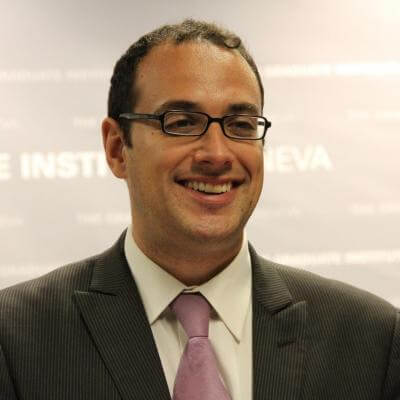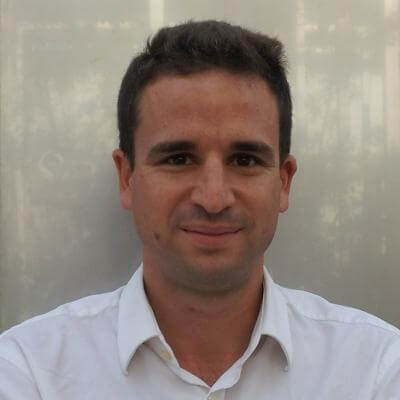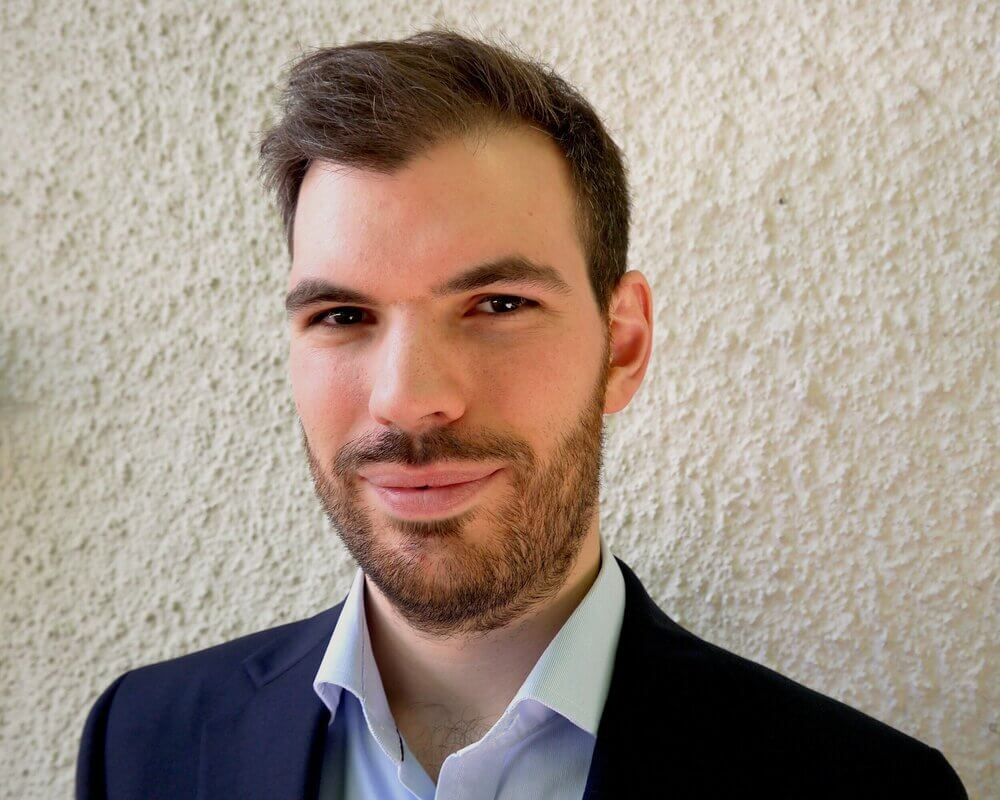The Politics of Information Manipulation in the 21st Century: A Case Study of the Islamic Republic of Iran
The information war – or narrative war – is at the heart of the Islamic Republic’s international communications strategy. A highly varied array of propaganda organs exists to spread the official Iranian narrative, with adaptations specific to whichever public opinion is being targeted by Tehran. The Spanish-language channel HispanTV draws on widespread anti-American sentiment in Latin America; the English-language channel Press TV puts the Palestinian question at the centre of its agenda, seeking to instrumentalise critical voices from the Anglo-Saxon world such as Jeremy Corbyn in the UK or the left wing of the Democratic Party in the US. More generally, the official propaganda organs seek to instrumentalise all Western dissident voices (recall Ahmadinejad’s support for Dieudonné) in order to highlight internal divisions within the West and Western “double standards” on human rights issues.
This strategy is all the more effective in the US, given that there have been no diplomatic relations between the US and Iran for over 44 years, after US diplomats were held hostage in Iran for 444 days. Since the 2000s, an informal network offering Tehran influence on diplomatic, security and ideological matters has existed in the US. This situation is one of the consequences of the absence of official diplomatic relations: it raises issues regarding Tehran’s networks of American academics in the US and, more broadly, on the usefulness of maintaining informal diplomatic networks with a regime of this kind. This observation has to be qualified, however, since academics who support the establishment of informal links with the Islamic Republic also point out that Pakistan’s mandate as a protecting power for the representation of Iranian interests in the US and the Permanent Mission of the Islamic Republic of Iran at the United Nations in New York already provide Tehran with a diplomatic presence on US territory.
In any event, since autumn 2022 and the Iranian national uprising, the Islamic Republic’s US networks have been under constant pressure from their Republican political opponents, who view this group of academics, journalists and experts as an “Iran lobby”, i.e., a pro-Iranian pressure group. Seen from the US perspective, therefore, there is at once an issue of limited access to Iran for field research and an issue of the Islamic Republic’s significant presence at US academic institutions, a presence that has in some sense served as an alternative to official, bilateral diplomatic relations between the two states since 1979.
These informal links have contributed to the creation of a network among US academics and journalists where numerous careers have flourished as a result of repeatedly spreading a historical narrative of a contemporary Iran “that normalises Evil”. This proximity of certain academics and/or journalists to the Iranian authorities is also an issue that arises in the French context, in light of the Franco-Iranian institutional partnerships that have existed since the 1979 Revolution.
Nonetheless, the issues concerning contemporary historical research on the Iranian world are somewhat different in France, due in particular to the presence of a French Research Institute inside Iran (Institut français de recherche en Iran – IFRI) in Tehran. This issue of self-censorship by researchers in Iranian Studies is thus central to the production of Western academic research on contemporary Iran. This is indeed one of the last foreign institutes that still allows Western researchers in the Social Sciences to work in the Islamic Republic. However, even this gateway to the Iranian world has been under pressure from the recurring political tensions since 1979, with periods of operation alternating with periods of partial or complete closure, depending on the state of bilateral relations between Paris and Tehran. In early 2023, the closure of the IFRI was announced, in response to Charlie Hebdo’s publication of caricatures of Iran’s Supreme Leader.
Iran has thus become an almost inaccessible territory for Western researchers and journalists with an interest in contemporary political issues; access difficulties have also led researchers to make scientific choices for political reasons. As a result, this adaptation to political realities in the Islamic Republic has led to new working methods for Western research in the field of Iranology. In particular, there has been an increasing overrepresentation of research on Shiism when selecting research topics. Western academic research has thereby become focused on an issue that was essentially absent from Iranian Studies before the Revolution. This issue of self-censorship by researchers in Iranian Studies is thus central to the production of Western academic research on contemporary Iran.
The almost complete control by the Iranian regime over access for researchers and journalists to Iran is one of the key elements of Tehran’s information policy. By blocking access to independent providers of news and knowledge, the regime is able to control the information that leaves the country. This strategy of information suppression has resulted in the use of tools such as the cybersurveillance of researchers and journalists, both within Iran and abroad.
 Daily city protest count in Iran following the death of Mahsa Amini from September 2022 to December 2022. The figure also shows key events that have occurred during this period.
Daily city protest count in Iran following the death of Mahsa Amini from September 2022 to December 2022. The figure also shows key events that have occurred during this period.This information war has also been called a “psychological war” or a “soft war” by the Iranian regime, and it intensified between the 2009 Green Movement and the national uprising in 2022–23. It entails the conflation of Western military strategy with a “cultural war”: as such, NATO is not perceived by Tehran solely as a strictly military organisation but also as a cultural entity. It is in this context that the regime presents a narrative emphasising Iranian military capacities and characterised by excessive rhetoric against its enemies (dushman) for a domestic audience inside Iran. Conversely, the Islamic Republic has also constructed a narrative of victimisation that presents the regime as the victim of hostile policies from Washington, Tel Aviv and Riyadh.
This narrative is likewise part of a strategy by the Iranian authorities to deny responsibility for the economic, political, ecological and social crises that are gripping the country. The aim of this double talk is to demonstrate the regime’s political strength on the domestic political stage, while presenting any political discourse in Persian as a “manipulation” from abroad.The aim of this double talk is to demonstrate the regime’s political strength on the domestic political stage, while presenting any political discourse in Persian as a “manipulation” from abroad. The effort to remain the sole provider of information both within Iran and abroad has largely failed in the period since the 1990s, due to an Iranian diaspora that now numbers more than five million, as well as to the emergence of Persian-language satellite TV channels and the use of the Internet to circumvent censorship. The scope of the regime’s failure is such that more than 80% of Iranians are now opposed to the Islamic Republic remaining in power and the credibility deficit of the official media has affected even the journalists who work each day to produce the official narrative. The Iranian state’s information war no doubt underpins its reign of terror both in Iran and abroad but this doesn’t alter the fact that 44 years after Khomeini’s Revolution, the regime is no longer able to persuade a majority of Iranian citizens of the merits of its political project.
PODCAST: The Right of Freedom in Armed Conflicts: A View from the United Nations, with Paige Morrow
RO Geneva Graduate Institute.
PODCAST: The link between political message and social context, with Michelle Weitzel
RO, Geneva Graduate Institute
DEFINITIONS | Some terms in the world of disinformation
An unfair practice of propaganda and manipulation used in the media and particularly on the internet, consisting of giving the impression of a mass phenomenon that emerges spontaneously when in reality it has been created from scratch to influence public opinion. (Source: Wiktionnaire, s.v. “astroturfing”.)
Computational propaganda involves the “use of algorithms, automation, and human curation to purposefully distribute misleading information over social media networks” (Woolley & Howard 2018). While propaganda has existed throughout human history, the rise of digital technologies and social media platforms have brought new dimensions to this practice (Source: Programme on Democracy & Technology of the Oxford Internet Institute, “What Is Computational Propaganda?”.)
A conspiracy theory is an explanation for an event or situation that asserts the existence of a conspiracy by powerful and sinister groups, often political in motivation, when other explanations are more probable. The term generally has a negative connotation, implying that the appeal of a conspiracy theory is based in prejudice, emotional conviction, or insufficient evidence. A conspiracy theory is distinct from a conspiracy; it refers to a hypothesised conspiracy with specific characteristics, including, but not limited to, opposition to the mainstream consensus among those who are qualified to evaluate its accuracy, such as scientists or historians. (Source: Wikipedia, “Conspiracy Theory”.)
Black propaganda is intended to create the impression that it comes from those it is supposed to discredit. Black propaganda contrasts with grey propaganda, which does not identify its source, as well as white propaganda, which does not disguise its origins at all. It is typically used to vilify or embarrass the enemy through misrepresentation. The major characteristic of black propaganda is that the audience are not aware that someone is influencing them, and do not feel that they are being pushed in a certain direction. This type of propaganda is associated with covert psychological operations. Black propaganda is the “big lie”, including all types of creative deceit. Black propaganda relies on the willingness of the receiver to accept the credibility of the source. (Wikipedia, “Black Propaganda”.)
Disinformation is false information deliberately spread to deceive people. It is sometimes confused with misinformation, which is false information but not deliberately so. Disinformation is presented in the form of fake news. Disinformation comes from the application of the Latin prefix dis- to information, to create the meaning “reversal or removal of information”. Disinformation attacks involve the intentional dissemination of false information, with an end goal of misleading, confusing, or manipulating an audience. They may be executed by political, economic or individual actors to influence state or non-state entities and domestic or foreign populations. These attacks are commonly employed to reshape attitudes and beliefs, drive a particular agenda, or elicit certain actions from a target audience. Tactics include the presentation of incorrect or misleading information, the creation of uncertainty, and the undermining of both correct information and the credibility of information sources. (Sources: Wikipedia, “Disinformation” and “Disinformation Attack”.)
Fake news
Fake news is false or misleading information presented as news. Fake news often has the aim of damaging the reputation of a person or entity, or making money through advertising revenue. Although false news has always been spread throughout history, the term fake news was first used in the 1890s when sensational reports in newspapers were common. Nevertheless, the term does not have a fixed definition and has been applied broadly to any type of false information. It has is also been used by high-profile people to apply to any news unfavourable to them. In some definitions, fake news includes satirical articles misinterpreted as genuine, and articles that employ sensationalist or clickbait headlines that are not supported in the text. Because of this diversity of types of false news, researchers are beginning to favour information disorder as a more neutral and informative term. (Source: Wikipedia, “Fake News”.)
IMT is a theory of deceptive discourse production, arguing that, rather than communicators producing “truths” and “lies”, the vast majority of everyday deceptive discourse involves complicated combinations of elements that fall somewhere in between these polar opposites; with the most common form of deception being the editing-out of contextually problematic information (i.e., messages commonly known as “white lies”). More specifically, individuals have available to them four different ways of misleading others: playing with the amount of relevant information that is shared, including false information, presenting irrelevant information, and/or presenting information in an overly vague fashion. (Source: Wikipedia, “Information Manipulation Theory”.)
Misinformation is incorrect or misleading information. It differs from disinformation, which is deliberately deceptive. Misinformation comes from the application of the Latin prefix mis- to information, to create the meaning “wrong of false information”. Rumours, by contrast, are information not attributed to any particular source, and so are unreliable and often unverified, but can turn out to be either true or false. Even if later retracted, misinformation can continue to influence actions and memory. People may be more prone to believe misinformation if they are emotionally connected to what they are listening to or are reading (Source: Wikipedia, “Misinformation”.)
Mute news is a pernicious form of information in which a key issue that often underlies the concerns of the public and the body politic is obscured from media attention. (Source: Lê Nguyên Hoang and Sacha Altay, “Disinformation: Emergency or False Problem?”, Polytechnique Insights, 6 September 2022.)
Propaganda is communication that is primarily used to influence or persuade an audience to further an agenda, which may not be objective and may be selectively presenting facts to encourage a particular synthesis or perception, or using loaded language to produce an emotional rather than a rational response to the information that is being presented. In the 20th century, propaganda was often associated with a manipulative approach, but historically, propaganda has been a neutral descriptive term of any material that promotes certain opinions or ideologies. (Source: Wikipedia, “Propaganda”.)
Typosquatting, also called URL hijacking, a sting site or a fake URL, is a form of cybersquatting, and possibly brandjacking, which relies on mistakes such as typos made by Internet users when inputting a website address into a web browser. Should a user accidentally enter an incorrect website address, they may be led to any URL (including an alternative website owned by a cybersquatter). (Source: Wikipedia, “Typosquatting”.)
PODCAST: The Difference between Russian and Ukrainian propaganda, Svitlana Ovcharenko
Research Office. Geneva Graduate Institute.
PODCAST: (Dis)Information as a tool of warfare, with Jean-Marc Rickli
Research office. Geneva Graduate Institute
PODCAST: Mobilization from below to face the control in authoritarian states, with G. O. and V. Neeraj
Research Office. Geneva Graduate Institute.










